18.11.2022
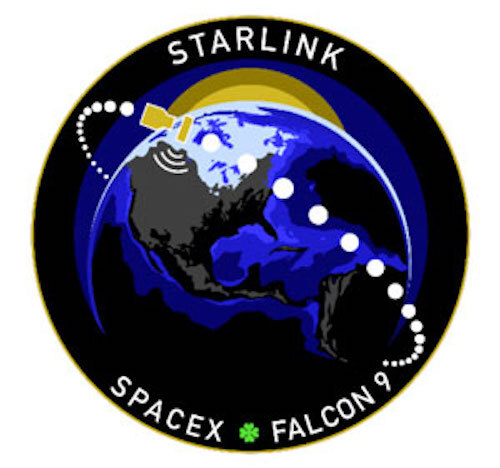
SpaceX delays Starlink launch after Falcon 9 static fire test

Around 10 am Pacific on November 17th, SpaceX test-fired one of its Falcon 9 rockets and announcedthat its next Starlink launch would follow as early as Friday, November 18th. Seven hours later, SpaceX canceled those plans, stating that it needed “to take a closer look at data” gathered during the test.
Next Spaceflight reports that Falcon 9 booster B1061 is assigned to the launch, making it responsible for the static fire portion of Thursday’s launch rehearsal. B1061 is one of six Falcon boosters that has completed ten launches and will become either the fourth or fifth to launch 11 times (or more) when it launches SpaceX’s Starlink 2-4 mission. But after SpaceX’s unusual post-test announcement, the rocket and its Starlink payload will have to wait indefinitely while the company determines how to proceed.
It’s not the first time SpaceX has delayed a launch indefinitely after a static fire test, but it is the first time in years. SpaceX semi-regularly stands down from launch attempts to conduct inspections or complete minor repairs or component replacements when data is amiss or contradictory, but those plans tend to mention the next launch target. This time, even SpaceX’s website has been scrubbed to say that “a new target launch date [will be announced] once confirmed.”
The last time a prelaunch static fire was explicitly blamed for a launch delay was in August 2019, when SpaceX fired up a Falcon 9 rocket ahead of its Amos-17 launch, didn’t like what it saw, decided to replace a valve on the booster, and then conducted a second static fire test to clear the rocket to launch. It’s possible that Starlink 2-4’s sequence of events will end up being similar.
Airspace closures indicate that Starlink 2-4 had already been delayed multiple times, missing targets on November 16th and 17th to November 18th.
Whenever it does launch, Starlink 2-4 will be SpaceX’s 65th operational Starlink mission, and is scheduled to add another 52 Starlink V1.5 satellites to the constellation’s Group 2 shell. Group 2 is the third largest of five shells that make up SpaceX’s first 4408-satellite Starlink constellation and will have 720 satellites once completed. SpaceX has nearly finished two main 1584-satellite shells that orbit over Earth’s mid-latitudes. It’s also begun launching one of two smaller shells (Group 3 and 5) that orbit Earth’s poles. Group 2 splits the difference with an orbit inclined 70 degrees relative to Earth’s equator.
According to data collated by astrophysicist Jonathan McDowell, and assuming that SpaceX intends to have as many satellites in orbit as possible, Group 1 and Group 4 appear to be four or five launches away from completion. Group 3 and 5 require eight more launches. Including Starlink 2-4, Group 2 will take another 13 launches. Barring surprises, SpaceX has approximately 25 launches left to complete its first Starlink constellation. In the first ten months of 2022, SpaceX launched 32 operational Starlink missions, and its launch cadence has increased throughout the year, boding well for the constellation’s completion by mid-to-late 2023.
Quelle: TESLARATI
----
Update: 15.12.2022
.
Launch Friday, December 16
- Company / Agency: SpaceX Starlink internal mission
- Rocket: SpaceX Falcon 9
- Location: Pad39-A at Kennedy Space Center
- Launch Time: 4:54-5:13 p.m.
- Trajectory: Northeast
- Weather: 90% "go"
- Landing: Drone ship
- Live coverage: Starts 90 minutes before liftoff
Quelle: Florida Today
----
Update: 17.12.2022 / 18:00 MEZ
.
STARLINK MISSION
SpaceX is targeting Saturday, December 17 for a Falcon 9 launch of 54 Starlink satellites to low-Earth orbit from Launch Complex 39A (LC-39A) at NASA's Kennedy Space Center in Florida. The instantaneous launch window is at 4:32 p.m. ET (21:32 UTC).
The first stage booster supporting this mission previously launched Crew Demo-2, ANASIS-II, CRS-21, Transporter-1, Transporter-3, and nine Starlink missions. Following stage separation, the first stage will land on the Just Read the Instructions droneship, which will be stationed in the Atlantic Ocean.
A live webcast of this mission will begin about five minutes prior to liftoff.
+++ 22:40 MEZ
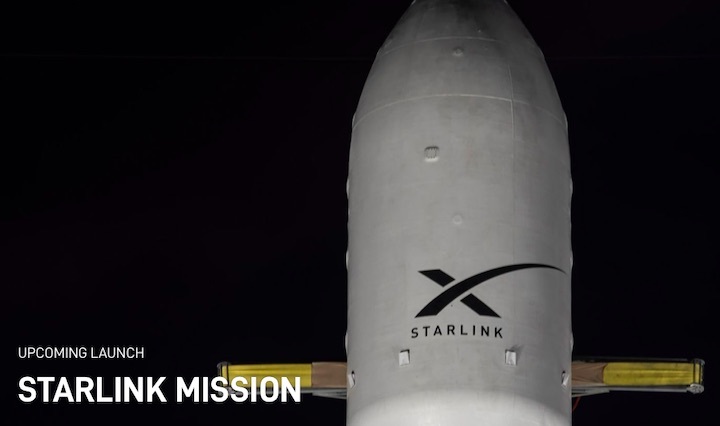






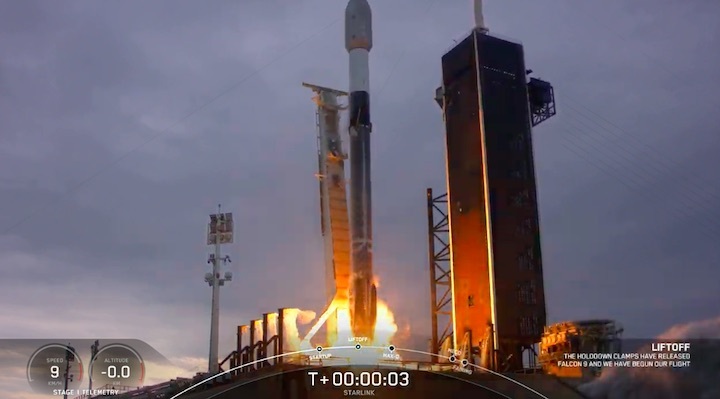



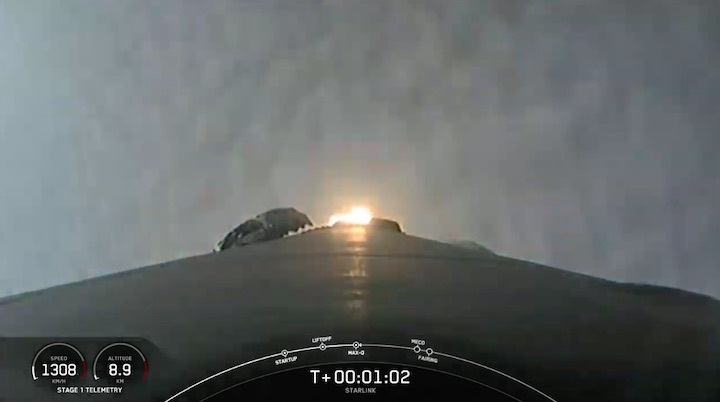






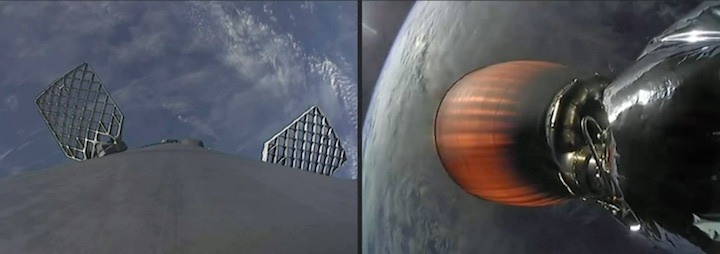
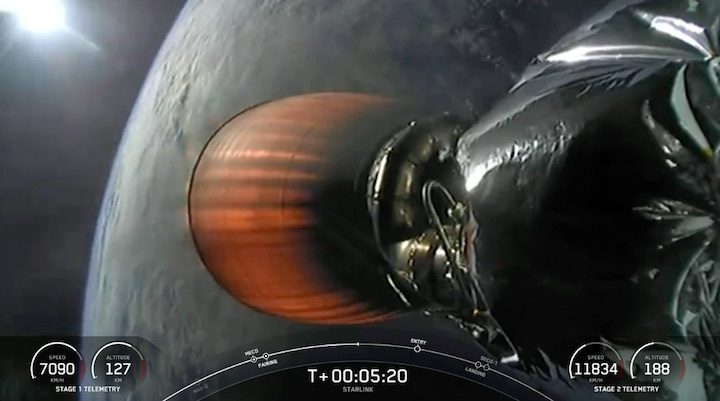




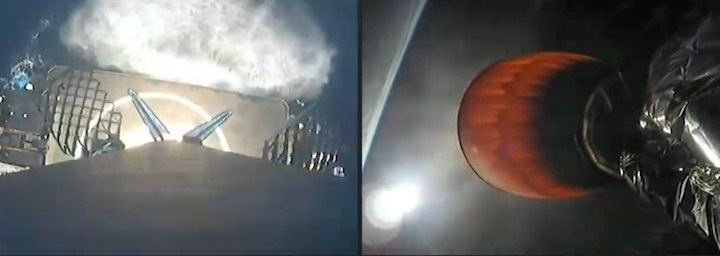
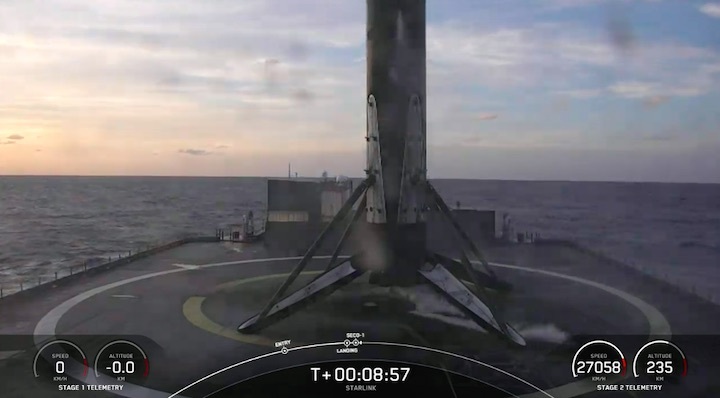


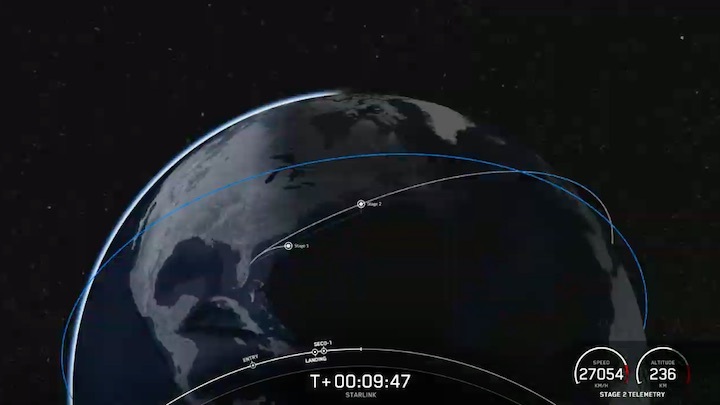
Quelle: SpaceX
----
Update: 19.12.2022
.
SpaceX booster launches for record 15th time on Starlink mission
SpaceX launched 54 more Starlink internet satellites Saturday from Kennedy Space Center in Florida, using a Falcon 9 booster on its 15th flight to space, a record for the company’s reusable rocket fleet.
Liftoff of the 229-foot-tall (70-meter) Falcon 9 occurred at 4:32:30 p.m. EST (2132:30 GMT) Saturday from Launch Complex 39A. It was the third Falcon 9 launch in less than 34 hours, following missions Friday from Cape Canaveral Space Force Station — just a few miles from pad 39A — and Vandenberg Space Force Base in California.
Those flights deployed the U.S.-French SWOT satellite, designed to survey Earth’s surface water resources, and two commercial broadband satellites for SES’s O3b mPOWER constellation.
SpaceX delayed the Starlink launch, designated Starlink 4-37, from Friday to focus on the O3b mPOWER mission for SES, one of SpaceX’s oldest customers.
The Falcon 9 arced northeast from Florida’s Space Coast, aiming for a low Earth orbit inclined 53.2 degrees to the equator. The rocket’s upper stage released the 54 flat-packed Starlink satellites about 15 minutes into the mission.
The satellites on-board the Falcon 9 will add to SpaceX’s consumer-grade, high-speed, low-latency internet network. Subscribers can currently connect to the Starlink network in more than 40 countries and territories.
The first stage booster on the Starlink 4-37 mission set a record for SpaceX’s reusable rockets. The booster stage, tail number B1058, debuted May 30, 2020, with the historic launch of NASA astronauts Doug Hurley and Bob Behnken on SpaceX’s first human spaceflight mission.
It’s now flown 15 times so far, helping deliver 777 satellites into orbit, including the 54 Starlink internet satellites launched Saturday. The missions flown by B1058 have included the launch of a South Korean military communications satellite, a space station cargo mission, two Transporter small satellite rideshare missions, and 10 flights with Starlink satellites.
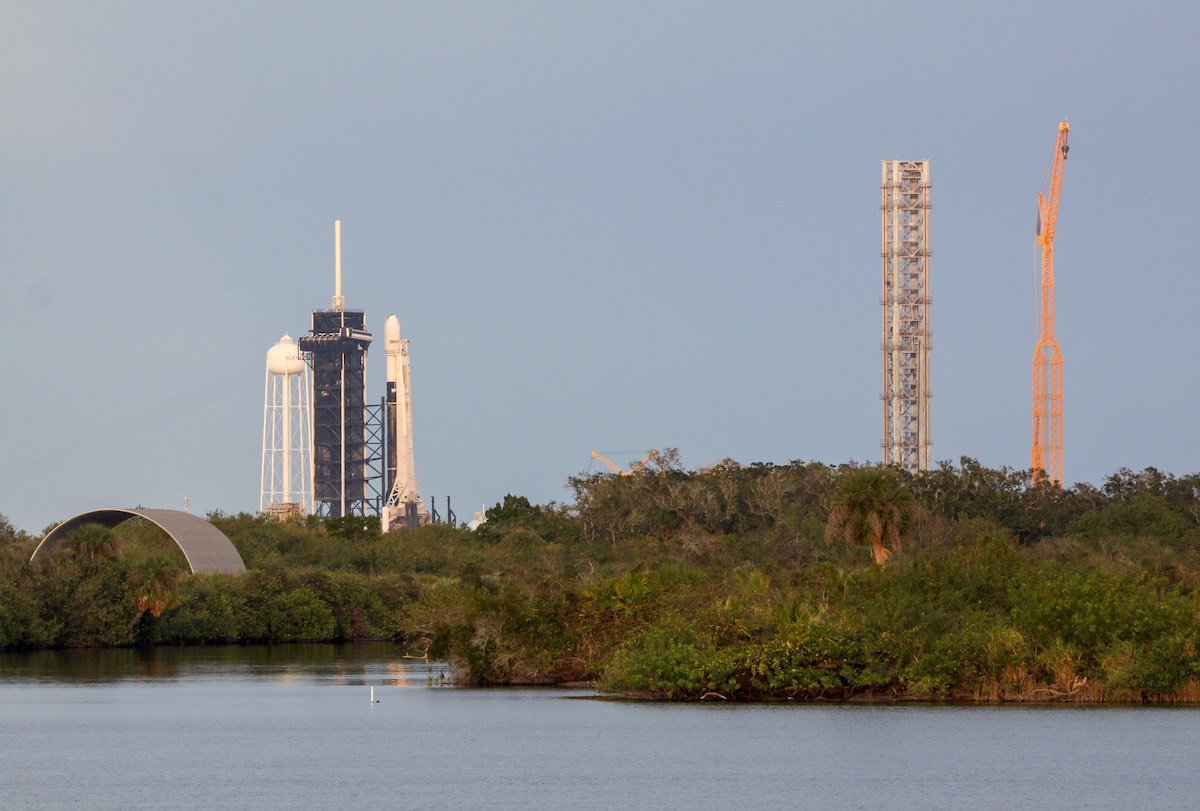
The launch Saturday was SpaceX’s first Starlink mission since Oct. 27. Since then, SpaceX had launched nine consecutive missions for commercial and U.S. government customers.
After Saturday’s mission, SpaceX has launched 3,612 Starlink satellites into orbit, including prototypes and failed spacecraft. The company currently has more than 3,200 functioning Starlink satellites in space, with about 3,000 operational and nearly 200 moving into their operational orbits, according to a tabulation by Jonathan McDowell, an expert tracker of spaceflight activity and an astronomer at the Harvard-Smithsonian Center for Astrophysics.
The 54 new Starlink satellites launched into one of five orbital “shells” in SpaceX’s internet constellation.
SpaceX targeted Shell 4 with Saturday’s mission. The network architecture includes satellites flying a few hundred miles up, orbiting at inclinations of 97.6 degrees, 70 degrees, 53.2 degrees, and 53.0 degrees to the equator. The spacecraft beam broadband internet signals to consumers around the world, connectivity that is now available on all seven continents with testing underway at a research station in Antarctica.
SpaceX is more than halfway complete with deploying the initial fleet of 4,400 Starlink internet satellites. The company has approval from the Federal Communications Commission to eventually launch and operate up to 12,000 Starlink spacecraft, and SpaceX has signaled it could aim to fly as many as 42,000 Starlink satellites in orbit.
SpaceX is developing an upgraded, much larger Starlink satellite design sized to launch on the company’s huge next-generation Starship rocket. But the Starship has not yet attempted a launch into low Earth orbit, and delays in developing and testing the new rocket will likely force SpaceX to start launching a smaller version of the new Starlink satellite design on Falcon 9 rockets.
The Starlink network was conceived as a venture to help draw in revenue to fund SpaceX’s ambition to build a base on Mars. The Starship rocket itself, designed to be fully reusable with relatively low operating costs, is central to Elon Musk’s Mars dream.
The launch Saturday was SpaceX’s 59th launch so far in 2022. Two more Falcon 9 rockets are scheduled to fly before the end of the year, one from Florida and one from California.
The higher launch rate has been aided by shorter turnarounds between missions at launch pads in Florida and California, and SpaceX’s reuse of Falcon 9 boosters and payload fairings. Launches carrying satellites for SpaceX’s own Starlink internet network, like the mission Saturday, have accounted for more than half of the company’s Falcon 9 flights so far this year.
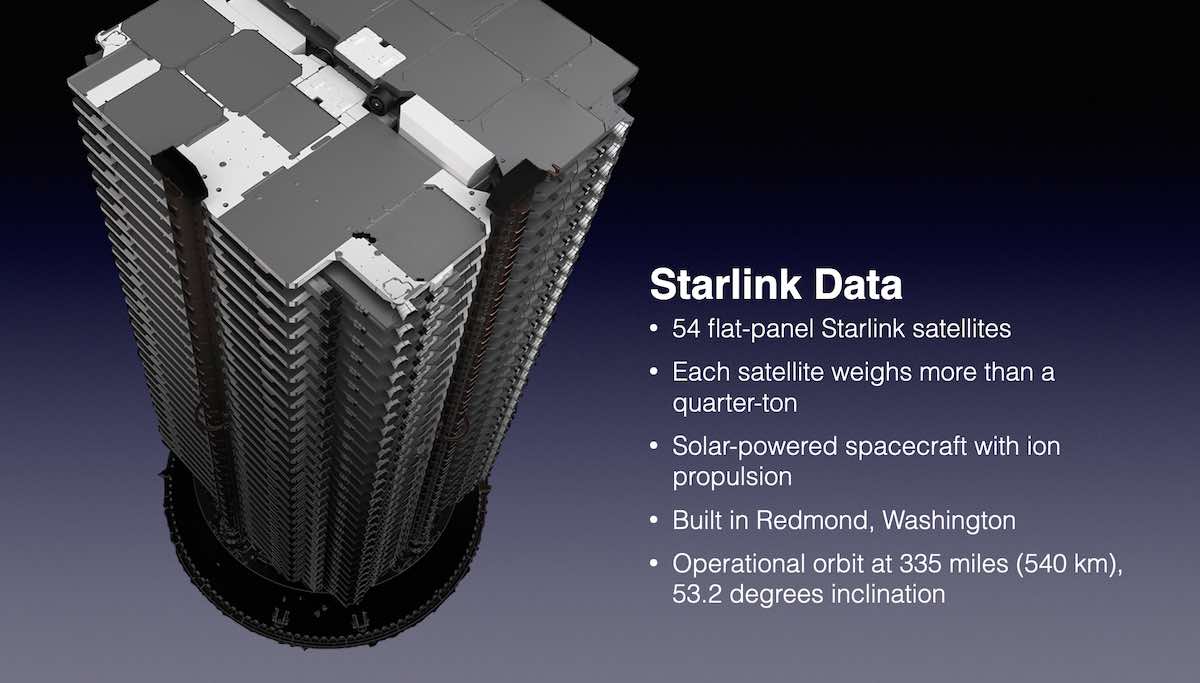
Stationed inside a launch control center just south of Cape Canaveral Space Force Station for Saturday’s countdown, SpaceX’s launch team began loading super-chilled, densified kerosene and liquid oxygen propellants into the Falcon 9 vehicle at T-minus 35 minutes.
Helium pressurant also flowed into the rocket in the last half-hour of the countdown. In the final seven minutes before liftoff, the Falcon 9’s Merlin main engines were thermally conditioned for flight through a procedure known as “chilldown.” The Falcon 9’s guidance and range safety systems were also configured for launch.
After liftoff, the Falcon 9 rocket vectored its 1.7 million pounds of thrust — produced by nine Merlin engines — to steer northeast over the Atlantic Ocean.
The rocket exceeded the speed of sound in about one minute, then shut down its nine main engines two-and-a-half minutes after liftoff. The booster stage released from the Falcon 9’s upper stage, then fired pulses from cold gas control thrusters and extended titanium grid fins to help steer the vehicle back into the atmosphere.
Two braking burns slowed the rocket for landing on the drone ship “Just Read the Instructions” around 400 miles (650 kilometers) downrange approximately nine minutes after liftoff.
The Falcon 9’s reusable payload fairing jettisoned during the second stage burn. A recovery ship was also on station in the Atlantic to retrieve the two halves of the nose cone after they splash down under parachutes.
Landing of the first stage on Saturday’s mission occurred moments after the Falcon 9’s second stage engine cut off to deliver the Starlink satellites into orbit. Separation of the 54 Starlink spacecraft, built by SpaceX in Redmond, Washington, from the Falcon 9 rocket was confirmed at T+plus 15 minutes, 22 seconds.
Retention rods released from the Starlink payload stack, allowing the flat-packed satellites to fly free from the Falcon 9’s upper stage in orbit. The 54 spacecraft will unfurl solar arrays and run through automated activation steps, then use krypton-fueled ion engines to maneuver into their operational orbit.
The Falcon 9’s guidance computer aimed to deploy the satellites into an elliptical orbit at an inclination of 53.2 degrees to the equator. The satellites will use on-board propulsion to do the rest of the work to reach a circular orbit 335 miles (540 kilometers) above Earth.
After reaching their operational orbit, the satellites will enter commercial service and begin beaming broadband signals to consumers, who can purchase Starlink service and connect to the network with a SpaceX-supplied ground terminal.
ROCKET: Falcon 9 (B1058.15)
PAYLOAD: 54 Starlink satellites (Starlink 4-37)
LAUNCH SITE: LC-39A, Kennedy Space Center, Florida
LAUNCH DATE: Dec. 17, 2022
LAUNCH TIME: 4:32:30 p.m. EST (2132:30 GMT)
WEATHER FORECAST: 60% chance of acceptable weather; Low risk of upper level winds; Low-moderate risk of unfavorable conditions for booster recovery
BOOSTER RECOVERY: “Just Read the Instructions” drone ship east of Charleston, South Carolina
LAUNCH AZIMUTH: Northeast
TARGET ORBIT: 144 miles by 208 miles (232 kilometers by 335 kilometers), 53.2 degrees inclination
LAUNCH TIMELINE:
- T+00:00: Liftoff
- T+01:12: Maximum aerodynamic pressure (Max-Q)
- T+02:27: First stage main engine cutoff (MECO)
- T+02:31: Stage separation
- T+02:38: Second stage engine ignition
- T+02:42: Fairing jettison
- T+06:47: First stage entry burn ignition (three engines)
- T+07:06: First stage entry burn cutoff
- T+08:28: First stage landing burn ignition (one engine)
- T+08:41: Second stage engine cutoff (SECO 1)
- T+08:49: First stage landing
- T+15:22: Starlink satellite separation
MISSION STATS:
- 192nd launch of a Falcon 9 rocket since 2010
- 201st launch of Falcon rocket family since 2006
- 15th launch of Falcon 9 booster B1058
- 164th Falcon 9 launch from Florida’s Space Coast
- 59th SpaceX launch from pad 39A
- 153rd launch overall from pad 39A
- 131st flight of a reused Falcon 9 booster
- 66th Falcon 9 launch primarily dedicated to Starlink network
- 58th Falcon 9 launch of 2022
- 59th launch by SpaceX in 2022
- 56th orbital launch attempt based out of Cape Canaveral in 2022
Quelle: SN
